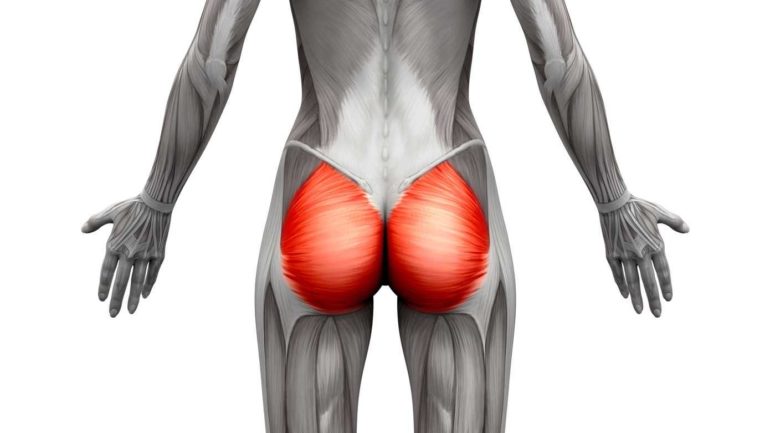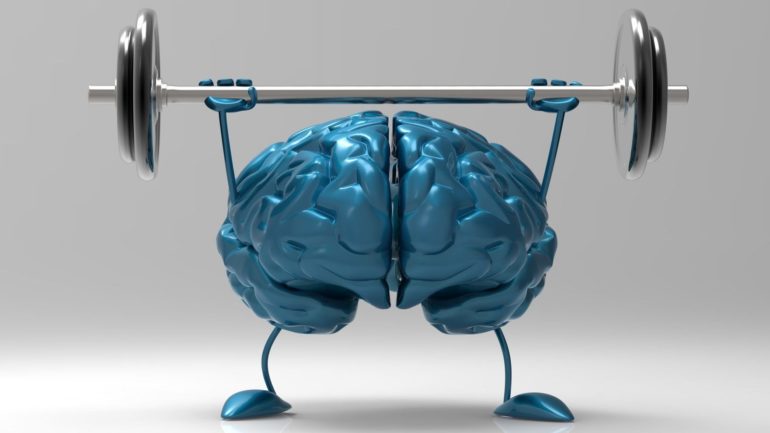A friend of my sister just got diagnosed with MS and asked if I had any guidance I could offer. He got me thinking about what advice I would have given myself of 20 years ago. Moving beyond questionable fashion choices (orange harem pants? Really?), there are some things I got right in the aftermath of diagnosis but others that I Would have done differently, had I known better. One of the challenges of MS is that it’s a life-changing diagnosis that comes without a user manual. That’s partly because it’s the snowflake disease – no two MS disease courses are alike – and partly because people are snowflakes, too. There simply aren’t any hard and fast rules. That said, there are some commonalities, so I’m going to take a leap and share some of the things I wish I had known back at the beginning.
1. Two heads are better than one
Before making any decisions about treatment or other next steps, get a second opinion from the best MS specialist you can reach. I live in a very small town in New Hampshire. To his credit, my local neurologist only needed a quick exam before packing me off for an MRI with a diagnosis of possible MS. After I did all the usual tests, he upgraded me to probable MS. Still, he wanted to play wait and see before starting me on a disease modifying treatment (DMT). You know that line about patience being a virtue? Yeah, well, not so much when it comes to MS. I got copies of my MRI films and hotfooted it down to Boston’s best MS center, where my soon-to-be new neurologist gave me a definitive MS diagnosis and immediately put me on a DMT. Early treatment was not yet a widespread practice. Fortunately, my new neuro operated on the cutting edge, which was where I wanted to be. And that brings me to my next tip…
2. Go to the best neurologist you can find
Yeah, yeah, I know this shows up in pretty much any advice for the newly diagnosed. But let me unpack this a little. For starters, you want a neurologist, not a primary care physician. Ideally, they should specialize in MS. You need all the firepower you can get. Look for a dedicated MS center, typically not difficult if you’re in a big city. If you’re in a small town, you may have to make a trek but trust me, it will be worth it.
Remember that neurologist in Boston that I mentioned? Getting to appointments with her is an all-day affair, but she’s on the faculty of the Harvard Medical School and associate director of what is arguably one of the best MS centers in the country. She had me on rituximab (a kissing cousin of Ocrevus) back in 2005, when most doctors were just throwing up their hands over PPMS. Today, it’s standard of care. I consider it one of the reasons that I have as much function as I do. My neurologist doesn’t just know about the latest treatments, she’s seen the effects on a variety of patients and is principal investigator for clinical trials. To me, that’s totally worth the drive (and the sherpas and the tanker truck of gas we use to get there…).
Knowledge is just one part of the picture. If you’re in Club MS, your neurologist is going to have a greater impact on your life than almost anybody, with the possible exception of your immediate family. That person needs to fit you. Can you see yourself telling them that you messed your pants daily for the last month? How about sexual dysfunction, if it comes up (or, you know, fails to)? Do you feel like they take your symptoms seriously? Do they respond when you call or email with questions? If you’re focused on cutting edge treatments, can they keep up? If you’re more interested in nontraditional medicine, do they respect that? It’s a lot like dating, only instead of finding The One to spend the rest of your life with, you’re looking for The One who will help you keep your body functioning at top level for the rest of that life.
3. Educate yourself
I’m not talking about doom scrolling. Take advantage of reputable sources like national MS societies or medical centers (see resources page). Learn about the types of multiple sclerosis, common symptoms, and treatments. The clock is always ticking when you’re in appointments. Get the most out of the time by coming in primed.
This especially holds for disease-modifying treatments (DMTs). Choosing among the more than 20 different options currently available can feel a lot like cramming for the final in a course called Your Future Is at Stake 101. Fortunately, the Multiple Sclerosis Association of America just launched The MSAA Treatment Guide. This super easy to use tool gives you all the deets on 19 different drugs (how they’re administered, how often, side effects, etc.). It lets you run a head-to-head comparison on your choice of DMTs. It even features video commentary from doctors and patients on each drug. Spend an hour there and you’ll be ready to handle the DMT discussion like a boss.
Oh, and it should go without saying but I still see the horror stories – if your neurologist just hands you a sheaf of pamphlets and tells you to make a choice, make a choice – kick them to the curb. Find a competent neuro who will help guide you to the DMT that’s the best fit for your situation. And while we are on that topic…
4. Get thee on a DMT, go!
There is a lot of research (a lot!) showing that patients who get on DMTs early have significantly better outcomes than patients who don’t. The web is also littered with posts by MSers who report proudly skipping meds and controlling their MS “naturally” with great success…until the day they suddenly weren’t and discovered their MRIs were lit up like pinball machines with lesions. Unfortunately, at that point, the horse done left the barn. No obvious increase in symptoms doesn’t necessarily mean that damage isn’t taking place. It just means that your central nervous system is compensating by using up your neurological reserve. And when that’s gone, it’s gone (horses, barns, etc.) Work with your neurologist to find a DMT that’s a good fit for you.
One additional point, which is that there are two schools of thought in choice of DMTs. One is escalation therapy (start with weaker drugs and escalate if they don’t work) and early highly effective treatment (EHE, a.k.a., go big or go home). The downside of EHE is higher risk but the downside of escalation therapy is, well, escalation (horses, barns…). The MSAA treatment guide has a great video of a father-daughter neurology team explaining the two treatment philosophies.
5. Become a germ freak
MS is an autoimmune disease, which means any infection kicks it into high gear. Avoid getting sick or getting an infection at all costs. In the age of COVID, much of this goes without saying but here are still some practical tips, for you and anyone you’re around frequently.
- Wash your hands regularly.
- Avoid touching your eyes or nose with your bare hands.
- Use hand sanitizer when you’re out in public, especially when you go to the doctor or travel. If you’re flying, bring antibacterial wipes to clean off the tray table and armrests.
- Avoid sick people. Be cautious about COVID, particularly if you are on DMTs, which are immunosuppressants. Wear a quality mask. Avoid crowds, particularly in enclosed spaces (and yes, that gives you the perfect excuse for ducking out of your cousin Mitzi Sue’s third wedding shower. You’re welcome.).
- Speaking of COVID, get vaccinated. Get a flu vaccine while you’re at it. Don’t give your immune system any excuse to get medieval on your myelin. (Note, talk with your neurologist about how to time your vaccinations and DMTs to maximize benefit).
- Clean cuts and wounds and treat with an antibiotic topical such as Neosporin. Keep bandaged. A while back, I read about someone who left a cut untreated after a fall and wound up in the hospital with cellulitis. Don’t be that person – practice basic first aid.
- Be vigilant about UTIs. If your symptoms suddenly start worsening without warning, check whether it might be a UTI.
With your diagnosis, you basically just got a bye on being a good doobie and letting infections run their course without antibiotics. Take the meds when they are prescribed and finish the entire prescription. That said, antibiotics are also hard on you when you have MS. If you have to take them, be sure to take a quality probiotic immediately after to reestablish your intestinal flora.
6. Pay attention!
Figure out what affects you, whether it’s eating certain foods, experiencing certain temperatures, etc. If something hurts, pay attention and try to understand what’s happening. A couple of years ago, I kept getting chafed patches inside my knees. I just assumed that I had scratched myself or had a bite or whatever. What was actually happening was that my adductors (the muscles that pull your legs together) had gotten so spastic that I was rubbing my legs against the seams of my trousers with every step, as though I was walking on a tightrope (the official term for this is scissoring, I guess because tightrope walking doesn’t sound fancy enough). The problem was that while I was tightrope walking scissoring, I was also straining the ligaments on the insides of my knees and the insides of my feet, reducing my stability and causing increasing amounts of pain. It turned out that they can treat adductor spasticity with Botox, but first I had to be aware there was a problem.
If a motion becomes difficult, if something feels weak, this is your signal to pay attention. It’s not always MS – sometimes a cigar really is just a cigar – but it’s important to rule out, in case there’s a treatment for it. If it is MS, check with your neurologist to make sure it’s not a relapse. If not, figure out what muscles are involved and start working them.
7. Move it
The phrase “use it or lose it” particularly applies for MS patients. A study of healthy patients who had their left hands immobilized showed atrophy in the parts of the nervous system the controlled that hand. That’s the bad news – the good news is that as a result of participants compensating with their right hands, the portions of the nervous system that controlled the right hand actually improved. For those of us with MS, that’s awesome news – the more you do, the more effectively your CNS can do it (hello, neuroplasticity!) The other lesson is that the less you do, the less your brain is able to do.
So, even if you’ve never been an exerciser, become one now – walk, bicycle, take the stairs, run. Work on your core muscles. Lift weights to strengthen your upper body (small children count). Keep your quads and glutes strong. Make time to fit it in, even if it’s just a little bit at a time here and there— if you distribute it throughout the day, you can get it all done.
8. Talk to a therapist
A diagnosis of MS – or any serious illness – is an emotional shock. When you first get diagnosed, you will grieve. I think I cried for two weeks solid. Get out and get as much exercise as you can – the endorphins will help your mood and resilience. Feel what you’re feeling – you have to go through it before you can get past it. Working with a therapist, even for just a few appointments they can really help you through that postdiagnosis period.
9. Revel in your life
Now full disclosure, I’m not one of those “I have MS but MS doesn’t have me” toxic positivity people. The diagnosis sucks, there are no two ways about it. After 20 years with the disease, though, here’s my takeaway: Your life will be different but that doesn’t mean it can’t still be great. After a while, you’ll start to get a handle on it, physically and emotionally. You’ll find what works for you and you’ll move forward. To me, it’s like walking into a stiff headwind: It’s always there and I’m always fighting against it, but mostly I pay attention to other things. You will still have periodic meltdowns, but you’ll also still laugh, have joy, and accomplish things. You’re still you…you’re just you with MS.
Please let me know if you found this content to be helpful. Time is at a premium, so I’m always trying to figure out what article should take priority next. Please weigh in in the comments section. Thanks, and happy trails, Hackers!




 By then, we knew the red spots weren’t mosquito bites, they were hives. It would be another three days before we had an official diagnosis that tied together all of her symptoms:
By then, we knew the red spots weren’t mosquito bites, they were hives. It would be another three days before we had an official diagnosis that tied together all of her symptoms:  Hello? Hello? (Tap tap tap) Is this thing on?
Hello? Hello? (Tap tap tap) Is this thing on? Now at this point, we have to go through a few caveats. First, I haven’t found a miracle cure, just ways to make things incrementally better. Some days, that’s enough for me, just the sense that I have some control over this wild ride. Of course, understand that MS is an incredibly idiosyncratic disease – I’m just sharing what works for me. Let me know if it works for you, or if something else does. I have hopes that this site can sort of evolve into a solutions hub where we all share what works for us. And hold hands and sing Kumbaya.
Now at this point, we have to go through a few caveats. First, I haven’t found a miracle cure, just ways to make things incrementally better. Some days, that’s enough for me, just the sense that I have some control over this wild ride. Of course, understand that MS is an incredibly idiosyncratic disease – I’m just sharing what works for me. Let me know if it works for you, or if something else does. I have hopes that this site can sort of evolve into a solutions hub where we all share what works for us. And hold hands and sing Kumbaya.






